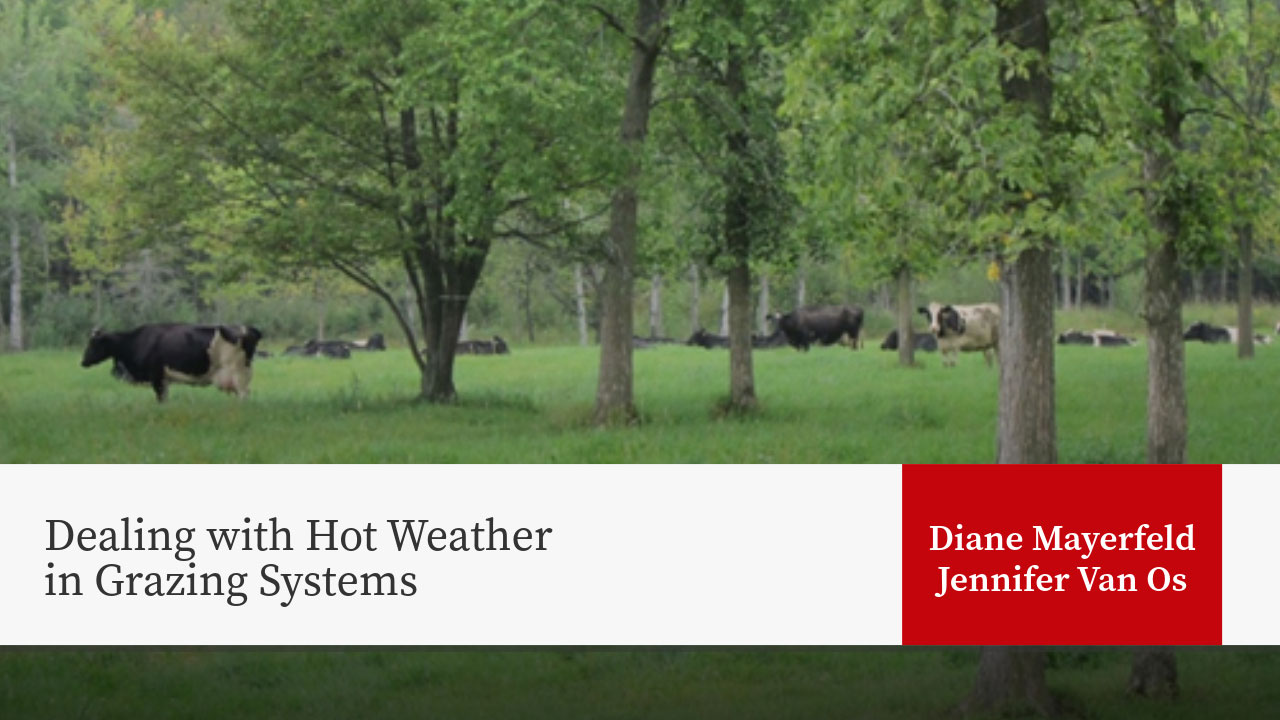
Introduction
Even in Wisconsin, summer days can be hot enough to cause heat stress for cows. The thermo-neutral range for cattle, in which they do not need to expend energy to keep their body temperature stable, is about 41°F to 77°F. When the temperature is above 77°F, especially with high humidity, cattle can have reduced production, particularly if nighttime temperatures stay over 70˚F. However, this drop in production sometimes follows hot weather with a 1- to 2-day lag. Offering supplemental hay, baleage, or silage can help maintain dry matter intake of lactating cows when grazing is reduced due to mild heat stress.
Early symptoms of heat stress include increased standing behavior, shade seeking, faster breathing rates or panting, and increased water intake and bunching around water sources. Open-mouthed panting, stringy drool, foam, or tongue sticking out indicates more severe heat stress. To minimize heat stress, there are three key things farmers can do to help cows on pasture stay healthy, productive, and comfortable during hot spells.
Provide plenty of clean, cool drinking water
Like humans, cows need to drink more water to regulate their temperature when it is hot. This allows them to replenish moisture lost through sweating and panting. Make sure they have access to plenty of water on hot days and that the water flow rate can keep up with multiple cows drinking. Providing water access after dairy cows exit the milking parlor is a good strategy to increase water intake while they wait to return to pasture. Make sure that the tanks are large and refill quickly to maximize the number of animals able to drink during their short stay at the parlor.
In the pasture it is a good idea to move the tank’s location every few days, because cows are likely to congregate around the water tank. If that is not feasible, watch the ground around the tank and be ready to add wood chips or other materials to minimize problems with mud. If the water tank is within 600 feet of all parts of the paddock, cows are more likely to drink individually throughout the day, whereas if they have to walk more than 900 feet to get water they are likely to drink as a group and stay at the tank for longer periods. If you do not have water in the pasture, use paddocks near the farmstead on hot days and let the cows access water in the farmstead at will or at least every two to three hours.
With a well-designed crossing or access and well-managed grazing, a stream or pond may be an appropriate source of water, but care must be taken to avoid serious water quality degradation. If a stream is your water source make sure the cows are moved to a different paddock and different part of the waterway every 24 hours or more frequently, and that the grass on the streambank has enough time to recover before the herd returns to that location. You can also design a stream crossing or access point using a substrate that discourages cows from lingering in the waterway and that protects the bank, you can limit stream access with electric fence, or you can pump water from the stream to a tank in the pasture. NRCS can help design water systems and stream crossings and may be able to provide financial assistance.
As water intake increases, urination also will increase, causing excretion of minerals including potassium, sodium, and magnesium. Increasing the amount of these minerals in the concentrate supplement or by a free-choice mineral mix will help cattle maintain adequate mineral levels.
For more information on watering systems see Watering Systems for Grazing ↗️, published by Michigan State University or Pumps and Watering Systems for Managed Beef Grazing ↗️ published by University of Missouri Extension.
Provide shade
Shade prevents cows from gaining heat from solar radiation. Studies have shown that cows highly prefer shade and seek it out. There are several ways to provide shade: trees, portable shade structures, and buildings.
Trees
If you have trees in your pastures, giving your cows access to the shade from those trees will reduce their heat stress on hot, sunny days. However, you need to manage that access well to prevent environmental degradation and health risks to the animals. There should be enough trees in the paddock that your herd can spread out and still find shade. If there are only one or two trees, cows will crowd in the shade under that tree. This crowding can lead to bare patches, excess manure and urine under the tree and not enough elsewhere in the pasture, and increased risk of mastitis. Pruning lower branches allows for more air circulation under the trees.
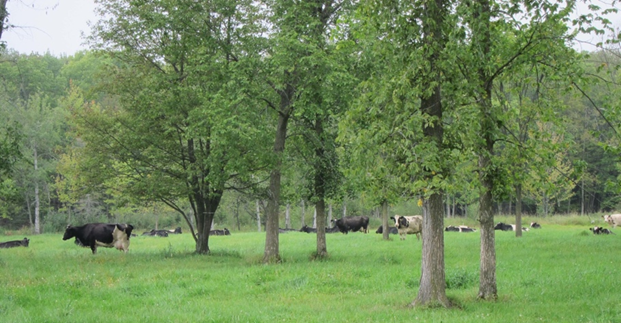
Farmers sometimes let their cows go into the woods for shade. Woodland soils can be very sensitive to compaction from livestock, which can result in reduced rainfall infiltration. Cows can also damage trees by rubbing on them, as well as indirectly through soil compaction. If woodland is your best source of shade, divide the wooded area into smaller sections so you can rotate your animals every 48 hours or more frequently and allow a long recovery period to prevent excessive damage to soils and trees. If your woodland is large enough, just use the first 30 to 80 feet for shade, and fence livestock out of the interior. In addition, it is critical to ensure that your animals have ample access to healthy forage, as many common woodland species are toxic.
If you use trees for shade, plan ahead and reserve those shade paddocks for hot days – and rotate your cows to open pasture at night. The practice of integrating trees and pasture to optimize economic and environmental outcomes is called silvopasture. More information on silvopasture establishment and management can be found at the University of Missouri Center for Agroforestry ↗️, USDA National Agroforestry Center ↗️, Cornell University Agroforestry publications ↗️, and University of Minnesota Extension Agroforestry ↗️.
Portable Structures
Portable shade structures allow you to control and move where your cows congregate for shade, and you can move them to paddocks as needed. You can purchase a shade structure or build your own. There are several plans for movable shade structures on the web. Your structure(s) should provide an absolute minimum of 40 sq ft of shade per cow to improve production, but ideally up to 100 sq ft per cow for the best animal welfare. If the shaded area is not large enough to accommodate the whole herd, you may need to reduce the number of animals in that paddock to prevent crowding in the shade. Moving shade structures on a daily basis will minimize damage to the pasture due to congregation and increased urination in a small area.
Buildings
If you have a well-ventilated building that provides shade, especially if you don’t have good shade in your pastures, then letting your cows stay in the building in the heat of the day in hot, sunny weather can give them relief. When you put them on pasture overnight cows can shift their behavior to graze after sunset and in early morning. For more information on managing buildings to maximize cow comfort in hot weather see Heat Stress Abatement in Dairy Facilities.
Minimize handling and supplement feed
Stress from handling can greatly exacerbate heat stress. When possible, schedule handling or shipping times in the early morning. Try to make both daily handling, such as moving cows for milking and occasional procedures such as AI, as calm and low-stress as possible. Having cows on pastures that are closer to the milking facility will reduce the walking distance and stress, since walking generates body heat, increasing heat stress. Shifting the milking times to earlier in the morning and later in the afternoon or evening can help limit walking during the hottest part of the day. For more tips on handling cows in hot weather see Animal Handling During Heat Stress.
Authors

Diane Mayerfeld
Sustainable Agriculture Coordinator for the Agriculture Institute in the Division of Extension – Diane Mayerfeld helps educators and farmers learn about sustainable agriculture techniques and resources, including grants from the USDA Sustainable Agriculture Research and Education (SARE) Program. Areas of focus include perennial cropping systems, climate change, and working with diverse farmers.

Jennifer Van Os
Associate Professor and Extension Specialist in Animal Welfare – Jennifer Van Os is an Associate Professor and Extension Specialist in Animal Welfare in the Department of Animal & Dairy Sciences at UW-Madison. She conducts applied research and extension to help dairy farmers improve the welfare of their animals using science-based animal care practices.
Original Authors
Diane Mayerfeld, Matt Akins and Jennifer Van Os
Original publication date: February, 2021
Revised: June, 2025


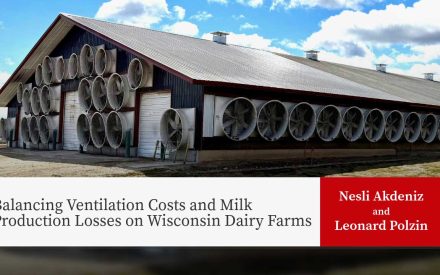 Balancing Ventilation Costs and Milk Production Losses on Wisconsin Dairy Farms
Balancing Ventilation Costs and Milk Production Losses on Wisconsin Dairy Farms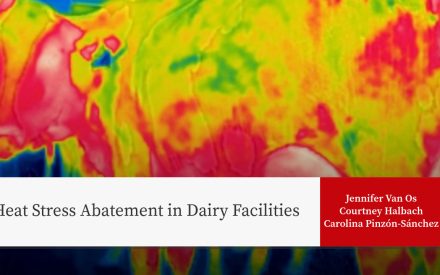 Heat Stress Abatement in Dairy Facilities
Heat Stress Abatement in Dairy Facilities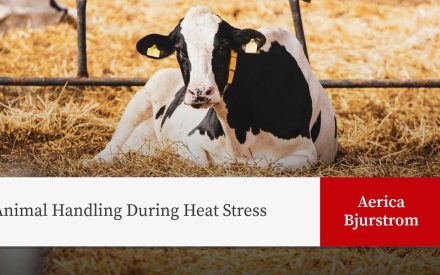 Animal Handling During Heat Stress
Animal Handling During Heat Stress ▶️ Watch: Confort y diseño de instalaciones en granjas lecheras
▶️ Watch: Confort y diseño de instalaciones en granjas lecheras


